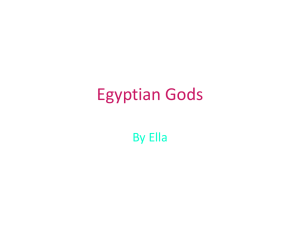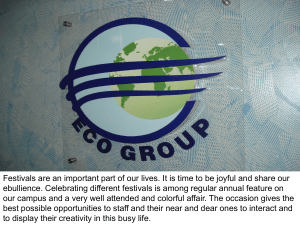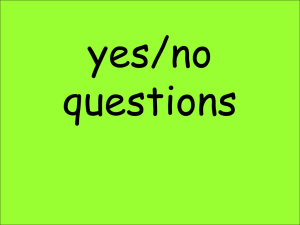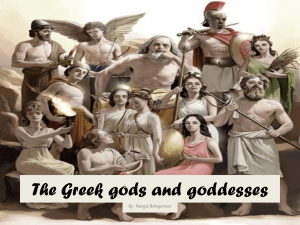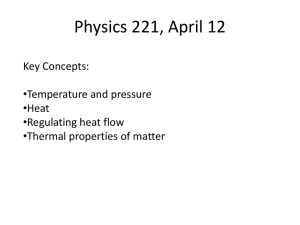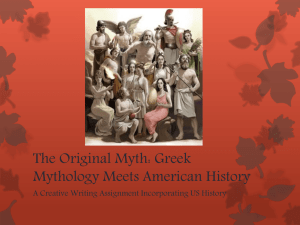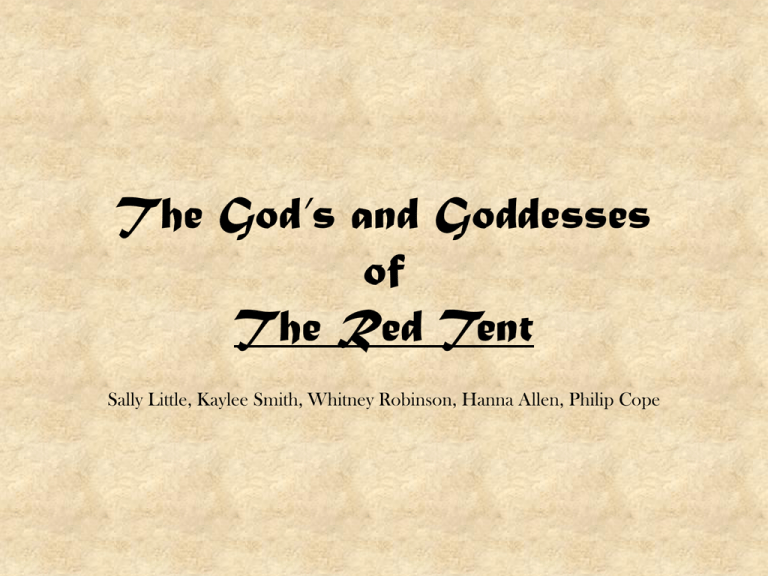
The God’s and Goddesses
of
The Red Tent
Sally Little, Kaylee Smith, Whitney Robinson, Hanna Allen, Philip Cope
Uttu
Uttu is known as the weaver goddess. She is the daughter of Nanna, god of
the moon, and Ninhursag, the mother of the plains. She taught women
how to weave, which stopped mortals from walking around naked and
freezing to death.
Within The Red Tent, Uttu
is the personal deity of
Bilhah.
“Bilhah’s grain offerings were made to
Uttu, the weaver.” (Diamant 90)
Nanna
Nanna, which is Sin in Babylonian religions, is the god of the moon. He is
the father of the sun god, Shamash, and the weaver goddess, Uttu. His
symbol is a crescent, just like the crescent moon.
Within The Red Tent,
Nanna is the father of
Uttu mentioned in the
story told by Bilhah,
“Nanna scoffed and said that women
were too stupid to remember the order
of cutting…but because he loved his
daughter he let her go.” (Diamant 79)
Nanshe
Nanshe is the daughter of Enki and Ninhursag. She was a goddess of social
justice, prophecy, fertility, and fishing. She was heavily associated with water, like
her father. Her seat of power was the Sirara temple in the city of Nina..
Within The Red Tent, Nanshe is the
interpreter of dreams, the goddess of water
and fertility, and Zilpah’s beloved goddess—
This is why Rachel decides to steal the
teraphim.
She was wide-eyed. ‘This tree, this place, this is where
she is, my little goddess, Nanshe.’ The sisters sat up to
hear Zilpah speak the name of her own deity, something
done only on a deathbed. Their sister felt herself at the
end of hope, and her voice was choked with tears as she
said ‘You too, sisters. All of your named gods abide
here. This is the place where we are known, where we
know how to serve. I will be death to leave. I know it”
(Diamant 89).
Gula
Gula is the goddess of healing. She is often depicted as a woman with a dog.
People dedicated small dog statues in hopes of being healed. She helped restore
the world after the “Great Flood”.
Within The Red Tent, Gula
functions as the personal deity
of Rachel and Inna.
“Gula, quicken the delivery
Gula, I appeal to you, miserable and
distraught
Tortured by pain, your servant
Be merciful and hear this prayer”
(Diamant 59).
Enlil
Enlil is the first father and god of the sky, air, wind and
storms. He is the son of An (Heaven) and Ki (Earth).
Within The Red Tent, Enlil is
depicted as the first father and
as a story to comfort the wives
and children.
“It was nothing exalted, only a
children’s song… who was snatched
away by An and Enlil, the sky gods,
and placed in the heavens to teach
him a lesson” (Diamant 109).
Taweret
Taweret is a water horse that stands on its hind legs with
an enormous belly and a smile. Taweret ensures an easy
labor.
Within The Red Tent,
Taweret is used to help Dinah
have an easy labor when she
delivers her son, Bar-Shalem.
“Taweret,” she said, touching the clay
figure and moving her hand to my belly.
Like a woman in labor, she placed the
figure between her legs to show me that
Taweret would ensure an easy
labor”(Diamant 222).
Osiris
Osiris is the Egyptian god of the underworld, worshiped
as a fertility, resurrection, and vegetation god. Married to
Isis, the sky goddess.
Within The Red Tent,
Osiris is portrayed as the god of
life, death, and fertilization.
“His wife has no knack with growing
things, and my mother tells me you
have the Osiris’s own touch with the
soil” (Diamant 263).
Ninhursag
Ninhursag is a Sumerian mother goddess, “Lady of the Foothills,”
mother of the plains. She is a goddess of the earth and fertility. She
wears a horned headdress and tiered skirt and keeps a lion cub by her
side.
Within The Red Tent, Ninhursag
appears in the ancient creation stories
Dinah’s sisters tell.
“Zilpah talked about gods and goddesses almost
more than she spoke about people...I loved her
stories about Ninhursag, the great mother, and
Enlil, the first father” (Diamant 13).
Innana
Innana is the Sumerian goddess of night, sexual love, fertility, and
warfare.
Within The Red Tent, Innana is presented
as The great mother that gives gifts to women
that is not known among men, and this is the
secret of blood.
“In the red tent, where days pass like a gentle
stream, as the gift of Innana courses through us,
cleansing the body of last month's death,
preparing the body to receive the new month's
life, women give thanks-for repose and
restoration, for the knowledge that life comes
from between our legs, and that life costs blood.”
(Diamant 153).
Innana
Innana is the Queen of Heaven and Earth and the Goddess of Love.
She is also Goddess of Grain, War, Fertility, and Sexual Love, as well.
Within The Red Tent, Innana is
part of all the females lives. She
is mentioned a lot when it
comes time for birth or the “first
blood.”
“Mother! Innana! Queen of the Night!
Accept the blood offering of your
daughter, in her mother’s name, in your
name. In her blood may she live. In her
blood may she give life.” (Diamant 172)
El
El is the leader of all Canaanite gods, the creator. He lives on Mount Saphon. El
is represented as an older man; he sometimes appears with a bull’s horns, which
symbolize strength.
Within The Red Tent, El stands
as the god of men, namely,
Abraham, Isaac, Jacob. He will
exist later as Yahweh to
Hebrews.
“El was the only god to whom Jacob bowed down- a
jealous, mysterious god, too fearsome (he said) to be
fashioned as an idol by human hands, too big to be
contained by any place -even a place as big as the sky”
(Diamant 61).
El’s Place in the Novel
In many ways, El is simply another god to the female characters in the book. They
do not challenge his existence; rather, they see him as another god in an
increasingly large terephim. In many ways, El begins to weaken the feminine gods
and goddesses .
El is the god of the male characters in the novel. For example, Jacob spreads tells
the story of his father’s near sacrifice to his sons. El slowly replaces the terephim
of gods and goddesses. He is the creator and destroyer of all things.
In short, the men and the women almost had a separate religion.
Sources
"El.“ Encyclopedia Mythica. 2011. Encyclopedia Mythica Online.14 Feb. 2011 <http://www.pantheon.org/articles/e/el.html>.
"Enlil." Enki Speaks. Web. 12 Feb 2011.
Frymer-Kynsky, Tikva. “Uttu: the weaver goddess.” In the Wake of the Goddesses: Women, Culture and
Transformation of Pagan Myth. Web. 14 February 2011. <http://www.gatewaystobabylon.
com/gods/ladies/ladyuttu.html
the
Biblical
"Gula." Matrifocus. Web. 12 Feb 2011. <http://www.matrifocus.com/IMB06/spotlight.htm>.
"Gula." Toxipedia.org. Stepstone Technologies and Powered by Atlassian Confluence, 15 Feb 2011. Web. 15 Feb 2011.
<http://toxipedia.org/display/toxipedia/Gula>.
Lindemans, Micha. "Enlil." Encyclopedia Mythica. MMVI Encyclopedia Mythica, 03 Mar 1997. Web. 12 Feb 2011.
<http://www.pantheon.org/articles/e/enlil.html>.
"Ninhursaga." The Oxford Companion to World mythology. David Leeming. Oxford University Press, 2004. Oxford Reference
Online.
15 Feb. 2011.<http://www.oxfordreference.com.wncln.wncln.org/views/ENTRY.html?subview=Main&entry=
t208.e1144>
“Osiris.”
Encyclopedia
Mythica.
2002.
<http://www.pantheon.org/articles/o/osiris.html.>
Encyclopedia
Mythica
online.
15
Feb
2011.
“Sin.” Encyclopedia Britannica. Encyclopedia Britannica Online. Encyclopedia Britannica, 2011. Web. 14 February 2011.
<http://www.britannica.com/EBchecked/topic/545523/Sin>.
“Taweret.” Ancient Egypt . 2010. Ancient Egypt Online. 15 Feb. 2011. <http://www.ancientegyptonline.co.uk/taweret.html>.
Ward, Dan Sewell. “Innana” Web. 14 February 2011. http://www.halexandria.org/dward384.htm

